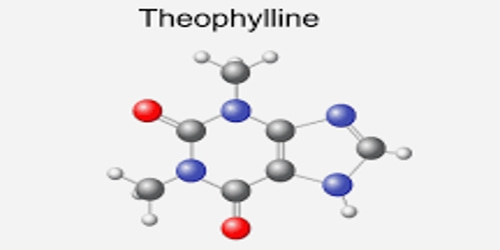Autoimmune illnesses, such as Type 1 diabetes, are the polar opposite of cancer, according to immunologists. The immune system goes into overdrive in the former and relentlessly targets the body’s own organs, eventually creating sickness; in the latter, the immune system shuts down and fails to mount an aggressive attack to prevent cancer from growing.
Why does the immune system behave so differently in the two cases? No one knows.
“This is a real mystery in the field,” says Andrea Schietinger, a tumor immunologist in the Sloan Kettering Institute (SKI) at Memorial Sloan Kettering Cancer Center who studies the phenomenon of immune cell dysfunction in cancer.
“We thought if we could figure out how autoimmune T cells are programmed, then we could take that information and apply it to tumor-specific T cells to make them more effective cancer killers.”
It was a long shot, to be sure. Dr. Schietinger was awarded a National Institutes of Health (NIH) Director’s New Innovator Award in 2017 to pursue this ambitious research initiative, a funding opportunity that expressly encourages high-risk, high-reward science.
Dr. Schietinger’s research team, particularly Sofia Vaccarino Gearty, an MD/Ph.D. student in the lab, and Weill Cornell Medicine scientists Doron Betel, Friederike Dündar, and Paul Zumbo, collaborated on the project.
The results have finally been released four years later. The ability of autoimmune T cells to continue fighting is based on a population of stem-like T cells that constantly refill the pool of self-reactive T cells, according to a study published in the journal Nature on November 30, 2021.
This form of stem-like T cell has never been detected in autoimmune disorders previously, and the researchers believe it could teach us a lot about how to treat both autoimmune diseases and cancer better.
I assumed the expectation would be that as a tumor immunologist I would work on cancer only, but that’s not the case. SKI has a really strong commitment to supporting fundamental basic science wherever it leads. It’s one of the attributes that makes working here so special.
Dr. Schietinger
Modeling Diabetes in Mice
Type 1 diabetes is caused by the body’s production of T lymphocytes that detect and kill the pancreas’ insulin-producing cells. These are referred to as beta cells. When 80 percent or more of the beta cells are gone, the body’s ability to regulate glucose levels in the blood is compromised, and diabetes develops.
The researchers used a mouse model of Type 1 diabetes that closely resembles what happens in people with the condition to learn more about what makes it distinctive. They developed a strategy to identify and mark “killer” T cells (CD8) that recognize and kill beta cells.
The researchers were able to see where the T cells came from and where they were moving as a result of this. The researchers then tracked these T cells in mice for more than 30 weeks.
CD8 T cells, like all immune cells, travel through the body through lymphatic channels that intersect with lymph nodes, which act as “depots” where immune cells encounter telltale signs (called antigens) from possible dangers such as microorganisms or cancer.
T cells migrate from these lymph nodes into tissues, where they embark on the attack. In the case of diabetes, autoreactive T cells migrate from a lymph node near the pancreas into the pancreatic, where they identify and kill beta cells.
The researchers were able to see that the T cells in the lymph node had some distinct characteristics from those in the pancreas by closely examining them throughout their journey.
The T cells in the lymph node, in particular, showed characteristics that indicated they were stem cells. These markers were not present in the T cells of the pancreas. The researchers noted other curiosities.
The T cells in the pancreas didn’t last long. Rather, they killed a few beta cells before succumbing to their own mortality. However, new autoreactive T cells were constantly arriving in the pancreas to replace those that had died.
According to the researchers, the T cells in the lymph node work as stem cells, regenerating the supply of self-reactive T cells in the pancreas. It also gave an explanation for why autoreactive T cells do not become tired in the same manner that tumor-specific T cells do: they are constantly replaced.
In fact, the autoimmune disease of diabetes is caused by the constant replacement of self-reactive T cells; if the T cells were not replaced, they would be unable to cause disease because they die too quickly.
Only a Few Cells Necessary to Cause Disease
That seems to be what was going on. The scientists conducted another experiment to prove that the stem cells were to blame for the sickness. They gave a new mouse a few of these cells and observed to see if the mouse acquired diabetes.
Indeed, transplanting just ten of the cells was enough to make the mouse diabetic. Furthermore, transplanting a few of these cells from the newly diabetic mouse to a third mouse was sufficient to make the new mouse diabetic. For more than seven months, this went on and on.
Transferring hundreds of thousands of pancreatic T cells to a new mouse, on the other hand, did not produce the disease. This indicated to the researchers that the stem-like cell population was critical in the disease’s development.
The researchers then wondered what might happen if T cells couldn’t move into the pancreas. A medication that stops T cells from moving out of lymph nodes was known to the researchers. The mice were protected against diabetes when the researchers gave them this medicine, probably because the dead T cells in the pancreas could not be replaced by new ones.
This work added to the evidence that this stem-like cell population has a role in illness. Dr. Schietinger believes that such a stem-like cell population has never been linked to Type 1 diabetes previously and that it could be a feature of other autoimmune disorders as well.
A Special Place for Fundamental Research
Dr. Schietinger never expected to be working on diabetes when she came to SKI six years ago. “I assumed the expectation would be that as a tumor immunologist I would work on cancer only, but that’s not the case,” she says. “SKI has a really strong commitment to supporting fundamental basic science wherever it leads. It’s one of the attributes that makes working here so special.”
She and her colleagues are now working on the next set of fascinating topics in collaboration with diabetes specialists at MSK and other universities. They aim to one day be able to cure autoimmune disorders and apply what they’ve learned from diabetes to cancer, allowing immune cells to fight cancer for longer.
This research was supported by a National Institutes of Health (NIH) Medical Scientist Training Program grant (T32GM007739), the National Institute of Diabetes and Digestive and Kidney Diseases (F30DK122691), the National Cancer Institute (DP2CA225212), a Lloyd Old STAR Award from the Cancer Research Institute, the Josie Robertson Foundation, the MSKCC Core Grant (P30CA008748), the Weill Cornell Medicine Core Laboratories Center, MSKCC TROT program (5T32CA160001), a GMTEC Postdoctoral Researcher Innovation GrantCycle for Survival, and the Marie-Josée and Henry R. Kravis Center for Molecular Oncology. The authors of the study declare no competing financial interests.
















